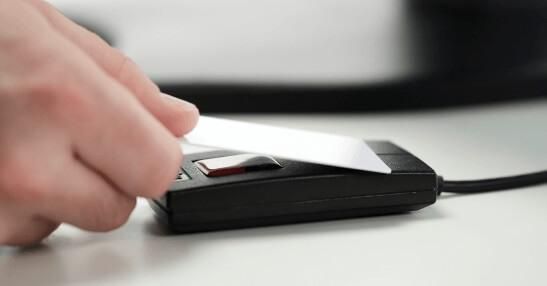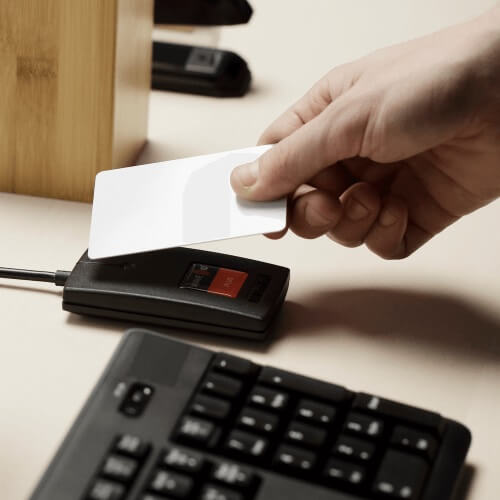
Hola mundo alerta alerta
Cyberattacks are growing more persistent and sophisticated. Simple password protection is no longer sufficient to prevent the financial and reputational damage that comes with data breaches. At the same time, technologies like digital wallets and smart cards have opened up new possibilities at the convergence of physical and logical access. In today’s critical environments, organizations need comprehensive logical access control strategies to protect sensitive data, ensure compliance and avoid financial and legal consequences.
What is logical access control?

Logical access control is a system for authenticating employees’ identities and authorizing access to data, networks or computing resources. Typically, employee permissions are assigned based on predetermined roles or criteria, streamlining and automating a key aspect of security. Regular access control audits of this system are vital for ensuring security. Using a logical access control checklist can help you identify gaps in your existing controls so they can be patched quickly.
Logical access control is different from physical access control, which controls who can physically enter a facility or room. However, these two types of control are increasingly converging as organizations adopt a more unified approach to identity and access management that leverages secure credentials and technologies such as digital wallets. Considering physical and logical access together can help streamline user experience and bolster security against internal breaches and threats.
Why is logical access control important?
Robust logical access control is vital for protecting against all types of digital dangers. Besides defending against external cyberattacks, it also mitigates the risk of insider threats, which involve the intentional misuse of access privileges by individuals within an organization for malicious purposes. By ensuring only authorized individuals can access sensitive data, it reduces the chance of a data breach by any of these means and avoids the reputational damage to your company that could result. Strong logical access control also supports compliance with data privacy regulations such as CCPA and GDPR that require companies to safeguard users’ personally identifiable information (PII).
However, the benefits of logical access control extend beyond improved security and compliance. A comprehensive system often uses advanced authentication methods such as smart cards and biometrics, reducing reliance on passwords and PINs. This boosts workflow efficiency by removing friction from the login process and reduces operational disruptions from lost or forgotten passwords.
According to rf IDEAS’ 2024 State of Passwordless Security report, resetting a password takes an average of 3 minutes, 46 seconds. When added up cumulatively over time, that amounts to an enormous amount of lost productivity — productivity you recover when you transition to a passwordless setup. Considering factors like these can help you design a stronger logical access control system to secure your organization’s data, systems and resources.
Logical access control system authentication mechanisms
A strong logical access control system is crucial to protect valuable and confidential data and ensure your organization’s digital security. A robust system comprises multiple authentication mechanisms that operate together to effectively control and oversee secure access to digital resources. These mechanisms may include card readers, credentials, passkeys/FIDO2 (Fast Identity Online), passwords, PINs, biometrics or other tools that authenticate the identities of users to guarantee that only allowed access is granted.
Many organizations employ multi-factor authentication (MFA), which authenticates users based on three types of factors: something they know, something they have and something they are. A system may employ all three of these factors, or just one or two depending on the particular system, network or context. Logical access control authentication mechanisms can be easily grouped according to their roles in an MFA scheme.
1. ID badges, mobile credentials or security keys
This first category of credentials fulfills the “something you have” requirement for MFA. Employees might carry ID badges or security keys, or load a smart card into a digital wallet on their mobile device which they tap for access. These types of credentials provide reliable, streamlined authentication when paired with best-in-class readers like the WAVE ID® Plus Mini and WAVE ID® Mobile Mini.
2. Biometrics
Biometric authentication technologies such as fingerprint scanning and Face ID validate an employee’s identity based on their physical characteristics, providing the “something you are” in an MFA framework. Readers such as the WAVE ID® Bio combine biometric authentication with secure badge and mobile credential reading capabilities for a multi-faceted security approach.
3. Passwords and PINs
While they fulfill the final MFA requirement — “something you know” — passwords and PINs are not a recommended logical access control authentication method on their own. They’re often reused across multiple applications and devices, making them less secure. They’re also easily compromised in social engineering scams and data breaches. If your organization currently relies on passwords and PINs, consider improving security by using a software platform like rf IDEAS’ ConvergeIDTM to tie these non-secure credentials to employee ID badges. Alternatively, boost both security and productivity by adopting passwordless single sign-on (SSO), which allows each employee to sign into all the applications they need with a single credential.
Protect sensitive information with logical access control
As logical and physical access control continue to converge, it’s important to take a comprehensive approach to security strategy. A robust logical access control system is the foundation on which you can build strong protections for all your organization’s assets, improving efficiency, streamlining workflows, bolstering compliance and safeguarding sensitive data.
From smart card readers to SSO solutions, rf IDEAS offers a wide array of products that can help you uplevel your organization’s approach to logical access control.
Get in touch with rf IDEAS to learn how to protect your organization’s data today.